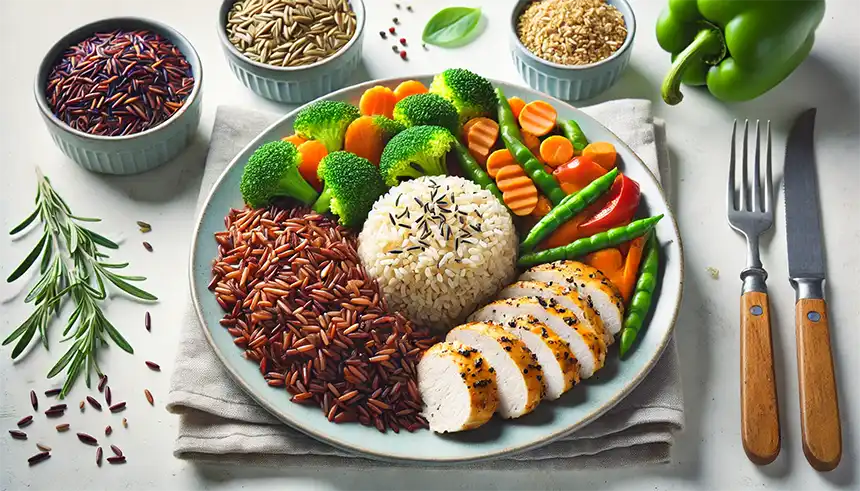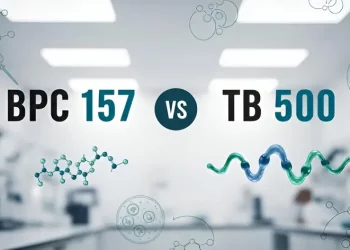Rice for Weight Loss : Rice is a staple food for over half of the world’s population and comes in various forms, including white, brown, and wild rice. It’s a versatile grain that can be incorporated into many dishes, but its role in weight loss diets often raises questions. Understanding the right quantity and type of rice to consume can make a significant difference in achieving weight loss goals. This article delves into the optimal rice intake for weight loss and offers practical tips to help you incorporate it into your diet effectively.
Nutritional Profile of Rice
Rice is primarily composed of carbohydrates, providing a quick energy source. Different types of rice offer varying nutritional benefits:
- White Rice: A refined grain with the husk, bran, and germ removed. It has a longer shelf life but fewer nutrients compared to brown rice.
- Brown Rice: A whole grain that contains the bran and germ, providing more fiber, vitamins, and minerals.
- Wild Rice: Technically a grass, wild rice is high in protein and fiber.
Benefits of Rice for Weight Loss
While rice is often perceived as a weight gain food due to its high carbohydrate content, it can actually be beneficial for weight loss when consumed in moderation. Here are some reasons why:
- Satiety: Rice can help you feel full for longer periods, reducing the likelihood of overeating.
- Energy Boost: Provides a steady release of energy, which can be helpful for maintaining an active lifestyle.
- Digestive Health: Brown rice, in particular, is high in fiber, aiding digestion and promoting a healthy gut.
How Much Rice Should You Eat for Weight Loss?
The key to using rice for weight loss is portion control. Here’s a guideline on how much rice you should consume:
- Daily Caloric Needs: The amount of rice you should eat depends on your daily caloric requirements, which vary based on age, sex, activity level, and weight loss goals.
- Portion Size: A typical serving size for weight loss is 1/2 to 1 cup of cooked rice per meal. This portion provides enough carbohydrates to keep you energized without overloading on calories.
- Frequency: Incorporate rice into your meals 3-4 times a week to ensure a balanced intake of
Types of Rice for Weight Loss
Choosing the right type of rice is crucial for maximizing weight loss benefits. Here are the best options:
- Brown Rice: High in fiber and nutrients, making it a better choice for weight loss compared to white rice.
- Wild Rice: Rich in protein and fiber, it can be a great addition to your diet.
- Basmati Rice: Although it has a lower glycemic index than other white rice varieties, it should still be consumed in moderation.
Incorporating Rice into Your Weight Loss Diet
Here are some practical tips to help you include rice in your diet effectively:
- Balanced Meals: Combine rice with plenty of vegetables, lean proteins, and healthy fats. This ensures a balanced meal that supports weight loss.
- Cooking Methods: Opt for steaming or boiling rice rather than frying to keep calorie counts low.
- Healthy Additions: Enhance the flavor of your rice with herbs, spices, and vegetables rather than high-calorie sauces or oils.
Sample Meal Plan
Here’s a sample meal plan that includes rice and supports weight loss:
- Breakfast: Smoothie with spinach, banana, and protein powder
- Lunch: 1 cup of brown rice with grilled chicken breast and steamed vegetables
- Snack: Apple slices with almond butter
- Dinner: 1/2 cup of wild rice with baked salmon and a side salad
- Snack: Greek yogurt with a handful of berries
Also Read This : Weight Loss Tips: जानिए High Fiber Foods कैसे वजन कम करने में मदद कर सकते हैं
Common Mistakes to Avoid
When incorporating rice into your weight loss diet, avoid these common mistakes:
- Overeating: Stick to recommended portion sizes to prevent calorie overload.
- Skipping Fiber: Ensure you are choosing whole grain options like brown rice for added fiber.
- Ignoring Balance: Rice should be part of a balanced diet, not the main component of every meal.
The Role of Rice in a Balanced Diet
Understanding how rice fits into a balanced diet is essential for effective weight loss. Combining rice with a variety of other nutrient-dense foods can enhance its benefits:
- Vegetables: Pair rice with a variety of colorful vegetables to increase fiber intake and provide essential vitamins and minerals.
- Proteins: Adding lean proteins such as chicken, fish, or legumes can help maintain muscle mass and keep you feeling full longer.
- Healthy Fats: Including healthy fats like avocados, nuts, and seeds can enhance the flavor and nutritional profile of your meals.
Conclusion :
Rice can be a valuable component of a weight loss diet when consumed in the right amounts and paired with other nutritious foods. By understanding the optimal rice intake for weight loss and making mindful choices, you can enjoy this versatile grain while achieving your health goals. Remember, moderation and balance are key to successful weight loss.
Disclaimer :
The information provided in this article is intended for general informational purposes only and is not a substitute for professional medical advice, diagnosis, or treatment. Always seek the advice of your physician or other qualified health provider with any questions you may have regarding a medical condition or weight loss regimen. The nutritional and dietary guidelines discussed herein should be tailored to meet your individual needs based on your health conditions and goals. Reliance on any information provided in this article is solely at your own risk.



















